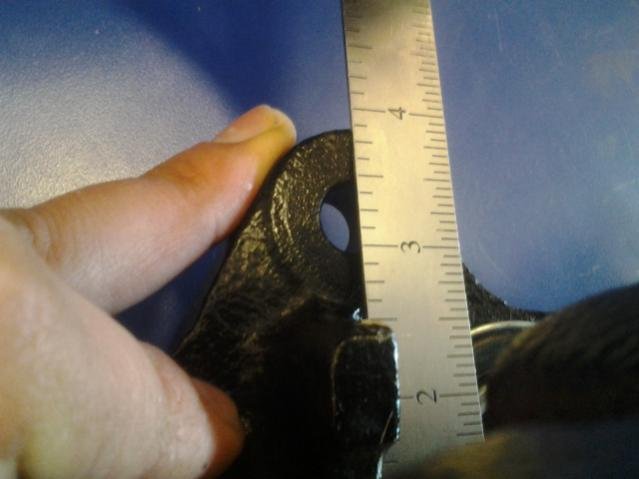Lexus GX470 03-09 also select 03-09 4runner, 07-09 FJ Cruiser, 01-07 Sequoia, 00-06 Tundra...basically everything toyota was putting out post 2004.
there are more variations on this stuff, in 2007+ the tundra went to a 5 lug :shaking: pattern, obviously we want to stick with 6 lug stuff. all the hub bores are big enough to fit :) toyota played around with more options during this time, so just looking for a 2008 4runner won't always get you the same rotor. The GX470 only came with 1 size, and it is the largest 4runner sport rotor, so that is why it is the header option. you can't go wrong if you pick up GX470 stuff.
04+ 2wd and 4cyl tacomas and 4runners and tundras get a slight upgrade from previous years.
Master Cylinder: 13/16" Bore
Booster: Vacuum Single 11.25" Diameter
Rotor:
Bendix PRT5458
12.55" O/D
1.02" nominal new thickness 1.02"
2.65" overall height
Weight: 18.5 lbs
Mounts Outboard of the hub.
These offer some significant mechanical advantage over the FJ60 rotors with about 3/4" extra diameter, this nets and effective increase of about 3/8" in the 'lever arm' that the brake pads get. They also offer an increase in thickness and mass to handle more heat, more better. The mounting ear on the caliper makes up for the rotor height change, no difference to the knuckle side mount between the 12.55" and the 13.3" rotor setups.
Calipers:
4 piston fixed WL
45MM diameter pistons
M10x1.0 inlet thread

- WL caliper ear height.jpg (30.6 KiB) Viewed 8292 times
GX470/4runner sport etc.
Master Cylinder:
? will need to take a note next time i'm at a junkyard. tundra's were running either 13/16 or 15/16, so i'd imagine it's right in there
Booster:
? again based on the tundra, should be about an 11" single diaphragm vacuum or looks like GX470 had hydraulic booster as an option
Rotor:
Bendix PRT5457
13.3" O/D
1.1" nominal new thickness
2.64" overall height
Weight: 20.6 lbs
again we are increasing mass and increasing our effective lever arm again. more mass = more heat, longer lever arm = more braking torque potential = more horsepower! everybody like horsepower, right?

Calipers:
4 piston fixed WH
45MM diameter pistons
M10x1.0 inlet thread

- WH caliper ear height.jpg (33.42 KiB) Viewed 8292 times
All of these calipers have a spread that is about 1/2" greater than the toyota solid axle and older pickup/4runner stuff. Front range offroad makes the easiest way to get all these calipers mounted, it isn't terribly difficult to make your own brackets though.

- WH caliper IFS hub.jpg (88.4 KiB) Viewed 8292 times
https://frontrangeoffroadfab.com/tacoma ... nting-kit/
can anybody confirm or deny that the 95-04 tacomas use the same caliper ear mount spacing as the 04+?
Here is a picture of the GX470 rotor and caliper (left) and the early tacoma rotor and 80's IFS caliper (right)

- tacoma vs gx470 brakes.jpg (67.53 KiB) Viewed 8292 times
here is a picture showing the clearance of the GX470 rotors, using the FROR mounting bracket to a 16.5" steel wheel. These calipers are thick enough that i'm going to add a 1/4" spacer to the front to clear the wheel. this depends fully on whatever style wheel you are running, this is about as much rotor as i can fit without going custom
Of note: i've got my caliper mounted in front of the axle instead of behind (as FROR suggests) biggest challenge it creates is access to the mounting bolts around the steering arms. there is no performance consideration at what degree around the clock you mount your caliper. In general, the top half helps keep it clean and out of the dirt, and keep the bleed screw above everything else.

- 13wh FROR installed.jpg (81.24 KiB) Viewed 8292 times
